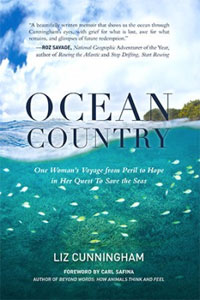It didn’t make the front page of The New York Times, but the “apple dropped.” When Newton discovered gravity he observed an apple falling. It was not a widely-recognized moment. But in the long eye of time a collaboration between dedicated individuals—biologists, climatologists, economists, engineers, financial analysts—experts from almost every field connected to climate change—changed the question about climate change. And it might be just as significant, or more significant a moment for the life of this planet as Newton observing that apple plop to the ground.
They didn’t ask, How might we limit global warming? Not reduce, slash, cut emissions, as if the best we had to offer future generations is hospice care for the planet. They asked: Do we know what we need to do in order to arrest and reverse global warming? Save the planet? And they published their answers.
I know: Huh? What?
The answers are in the just-released book, Project Drawdown, which presents compelling evidence that reversing global warming is possible. This comes parachuting into our zeitgeist when the alarms wailing about the state of our planet are almost deafening and political will seems flaccid, if not downright pernicious at moments. So why now? For the same reason that people rescue each other, rescue habitats, creatures, ways of life and refuse to give up on the goal of rescuing our planet: because we must.
Project Drawdown is the most comprehensive plan ever proposed to reverse global warming. Founded by author, environmentalist and entrepreneur Paul Hawken, it identified, researched and modeled the 100 most substantive, existing solutions. Why did they chose the name Drawdown? Because if you don’t have a goal, how do you achieve it? Drawdown is the moment in time when “greenhouse gases peak and begin to decline on a year-to-year basis.” Hawken writes, “The only goal that makes sense for humanity is to reverse global warming, and if parents, scientists, young people, leaders, and we citizens do not name the goal, there is little chance it will be achieved.”
It’s not a message—it’s a truth. We can do this. We have the means. The solutions exist.
So have a look, be inspired! I sure am. I remind myself that it’s in the midst of mind-numbing crises that some of the most stunningly creative and courageous acts happen.






Great book. I only have 75 pages left to read. Of the hundreds of environmental type books I have read this is one of the best. Recommend it for everyone. Good writing and great analysis. Big hope by showing the many solutions out there that we can choose.
Liz, don’t solutions exist for many intractable problems? There is no inherent reason for mass poverty around the world. For starvation. For 1 billion + people without electricity. For population growth. Or for what’s happening to the oceans, for that matter. Wouldn’t you say “we must” solve those problems as well. And I would agree – but that doesn’t mean we will.
I’m afraid that when something is presented as “we must solve it,” many people will misread that to mean “we will solve it, therefore it’s not as big a problem as I’ve been hearing.” That’s the wrong message when it comes to climate change, because it really is as big a problem as people have been hearing. And right now the best guess is that we won’t solve it, at least not in terms of avoiding a lot of dangerous climate change.
Hi Mark, I think your concerns about complacency are right on and “must” doesn’t necessarily mean “will.” But I do think that we haven’t brought together a set of solutions and modeled how they can work together. That’s a big step forward. Whether we will succeed in dealing with climate change is another thing. But I do think every success at some point has a “must” phase and a “vision” phase and we have to forge ahead with that.